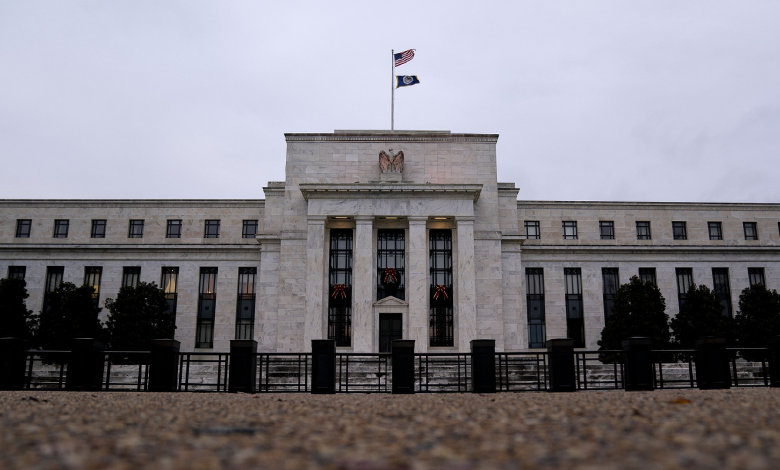U.S. economy & markets outlook: September rate cuts and tech earnings


Editor’s note: Matt Weller is head of Global Market Commentary, FOREX.com. The article reflects the author’s views and not necessarily those of CGTN.
As we look toward the latter half of 2024, the Federal Reserve’s approach to interest rates remains a focal point for economists and investors alike. With the Fed maintaining its interest rate in the mid-5 percentage amidst a backdrop of declining inflation, the real interest rate—the rate above inflation—has effectively been rising. This has resulted in a de facto tightening of policy, which the Fed might seek to avoid. Consequently, many analysts, myself included, believe a September rate cut is a done deal.
Expecting 2-3 cuts in 2024
If the anticipated rate cuts commence in September, we could potentially see up to three cuts by the end of the year, with one at each of the last three FOMC meetings. This would essentially be an effort by the Fed to normalize its policy, bringing the real interest rate back to levels seen earlier this year or even midway through last year.
At the start of 2024, traders and economists had predicted up to six rate cuts from the Fed. While it’s clear we won’t achieve that number this year, the expectation has simply shifted. Many of these projected cuts are now expected to occur in 2025. Currently, it seems plausible we’ll witness at least two, possibly three, rate cuts in 2024, followed by another three or four next year. This normalization would occur in a controlled manner, differentiating it from past environments marked by more abrupt policy shifts reacting to economic crises or recessions.
<img src='https://news.cgtn.com/news/2024-07-26/U-S-economy-markets-outlook-September-rate-cuts-and-tech-earnings-1vy1GqBfv4Q/img/e3ece38538894c6c977b86a592179ef4/e3ece38538894c6c977b86a592179ef4.jpeg' alt='Traders work in the New York Stock Exchange during morning trading on May 24, 2024/ CFP'
U.S. economy still resilient
Despite these interest rate adjustments, the U.S. economy has shown considerable momentum and resilience. The International Monetary Fund (IMF) recently projected a 2.6 percent growth rate for this year, tapering slightly to 1.9 percent in 2025.
While this indicates a mild slowdown compared to previous strong growth, it does not suggest an imminent recession or significant downturn. Importantly, the Fed’s rate cuts are likely to impact the economy minimally and with a lag, so immediate effects on the underlying economic conditions are not expected.
Monitor the freezing housing market
A critical sector to monitor is housing. In the U.S., the prevalence of 30-year mortgages has resulted in a market freeze, as homeowners locked into 3 percent mortgage rates are reluctant to move and face the current 7 percent rates.
Normalizing interest rates could help thaw this market, reviving a vital segment of the economy. Additionally, home builders, still cautious from the 2008 financial crisis, have been slow to add new supply, exacerbating the tight housing market. This situation presents significant challenges for prospective homeowners.
Stock market rally to broaden out as Q2 earnings season looms
Turning to the stock market, there’s been much discussion about the narrow breadth of the current rally, driven predominantly by a few large-cap tech stocks, or the Magnificent 7stocks.
While some fear a pullback in these stocks could drag the market down, there’s also potential for smaller and mid-cap stocks to catch up. Factors such as potential interest rate cuts could bolster smaller businesses more than their larger counterparts, which already enjoy substantial cash reserves and funding capabilities.
In the week of Jul 15-19, the small-cap Russell 2000 index just posted the most powerful five-day outperformance vs. the large-cap S&P 500 index in at least 40 years. Russell 2000 surged by 9 percent while the S&P 500 declined by 1 percent, a gap of 10 percentage points. The aggregate S&P 500 index has climbed by 11 percent during the past three months and YTD has returned an impressive 16 percent.
We might see this rally broaden, with smaller indices eventually outperforming the Nasdaq100. This shift could occur if we witness a slowdown in the AI infrastructure investment cycle, which has been a significant driver for big tech. Companies like Nvidia remain central to the AI theme, and as long as this momentum continues, they are well-positioned despite high valuations.
<img src='https://news.cgtn.com/news/2024-07-26/U-S-economy-markets-outlook-September-rate-cuts-and-tech-earnings-1vy1GqBfv4Q/img/29a93b4372bd42ea9c438d61885b548c/29a93b4372bd42ea9c438d61885b548c.jpeg' alt='Wall Street stocks dip in early trading Monday at the start of a heavy week of economic news on March 4, 2024./ CFP'
“Magnificent 7” continues to diverge
Tesla and Apple, despite their significant market caps, face growth challenges in the current environment, potentially making them more vulnerable to downside risks. Tesla’s efforts to scale its EV business and Apple’s slower growth rate contribute to these concerns.
Conversely, Amazon, with its massive workforce, presents a unique opportunity. If you compare it to the other Magnificent 7 stocks that have between 8 and 50 times more employees, that’s 1.5 million employees versus closer to 20,000 at Nvidia and 200,000 at Microsoft. The rest of the “Magnificent 7” stocks are also in between that range. The integration of AI, robotics, and automation could lead to significant efficiencies and cost reductions, potentially benefiting Amazon’s bottom line substantially.
Focus on the key technical levels
Speaking of the Nasdaq 100, it is bouncing back off its rising 50-day EMA following last week’s big swoon. While last week’s break of bullish trend line support is significant, the longer-term trend remains intact, with the 50-day EMA and 200-day SMA still rising at a solid rate.
If the earnings results in the coming week are able to meet or beat expectations, the tech-heavy index could regain the 20,000 handle and potentially retest the record high near 20,700 in short order. However, if weak earnings reports start to accumulate and the index is unable to recapture the 20,000 level, it could set the stage for a continuation down toward levels of previous-resistance-turned-support at 18,900 and 18,400 as we move through the dog days of summer.
In summary, for those monitoring technical levels, the 20,000 mark on the Nasdaq100 is crucial. The recent break of a bullish trend line dating back to April suggests we might enter a consolidation phase, similar to the pattern observed last year. Historically, election years tend to see a late summer pullback, followed by a period of clarity post-election, irrespective of the winning party. This pattern reflects the market’s preference for certainty over ambiguity.





